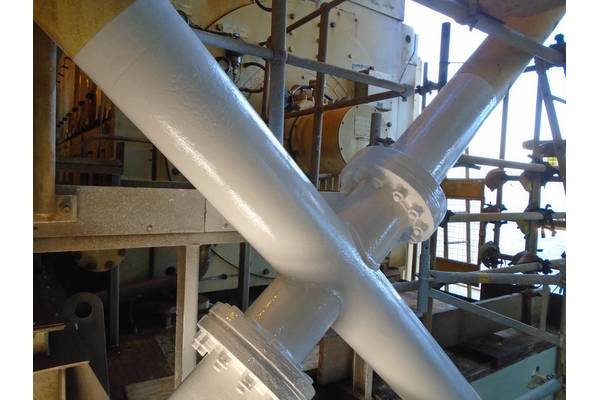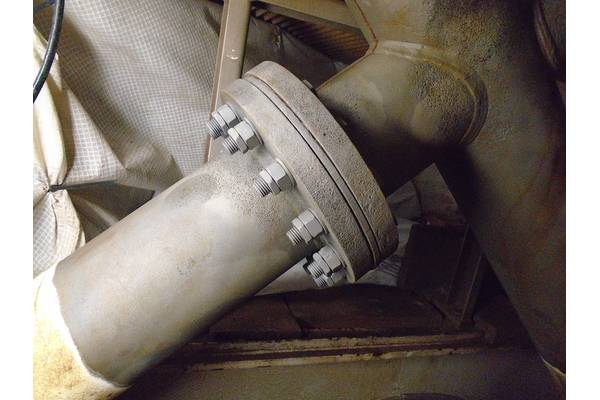


OGTC is conducting trials using EonCoat on Total and Nexen platforms
In a collaborative effort, designed to improve vital protection of offshore assets, the Oil & Gas Technology Center (OGTC) is successfully conducting trials of an advanced anti-corrosion coating on two North Sea offshore platforms.
The mission of the OGTC, which is jointly funded by the government, is to establish a culture of innovation and position as a global hub for oil and gas technology and innovation.
The challenge, however, is that the North Sea is one of the most brutal climates in the world. Often ice cold and windswept, the rigs in the North Sea face a constant corrosive onslaught of waves and salt spray.
Traditional coatings simply cannot withstand the environment. The cost of maintenance on a rig can be up to 100 times as expensive as land based maintenance because crews and supplies often have to be helicoptered out to the site, so when coatings fail it costs the asset owner enormous amounts of money.
After extensive research, OGTC identified a spray applied inorganic coating called EonCoat, from the Raleigh, North Carolina-based company of the same name, as a method of delivering long term protection for the offshore assets. The anti-corrosive coating represents a new category of tough, Chemically Bonded Phosphate Ceramics (CBPCs) that can stop corrosion, ease application, and reduce offshore platform production downtime even in humid, storm or monsoon susceptible conditions.
OGTC worked with SPi Performance Coatings to implement two trial programs. With OGTC's vision and sponsorship, SPi applied the coating to a Total E&P platform and a Nexen platform, each of which is located in the North Sea.
Total E&P Trial
SPi applicators were helicoptered to Total’s Elgin ‘A’ Wellhead platform on December 17, 2017. The coating was applied to areas of the platform’s lower deck that were suffering from severe corrosion, and a topcoat was added for aesthetics.
Surface preparation for the trial was carried out by Muehlhan, a global provider of surface protection and industrial services with operations in shipping, oil and gas, renewables, and industry/infrastructure segments.
In the trial area, the existing coating system was completely removed from structural steel tubulars and flat plate. The structure was power washed and degreased to remove contaminants. All tubulars were blasted to SA2.5, and flat plate mechanically prepped to ST3.
While rust rashing was visible on areas prior to spray application of the anti-corrosion coating, this was deemed acceptable due to its unique properties. It can be applied to a damp substrate with rust rashing/flash rusting, and high salt levels do not degrade the coating, which reduces surface preparation requirements.
The coating can cure in a single coat 15 minutes after application, depending on climatic conditions, which expedites completion, compared to traditional coatings, which require extensive drying time between coats.
In contrast to traditional coatings, which only form a physical barrier to corrosion until breached, the new coating chemically bonds with bare substrate surfaces, providing an iron magnesium phosphate layer that prevents steel corrosion. This process provides a very thin layer (about 2 microns) of permanent protection.
A second layer – a tough ceramic outer shell – provides further protection, and also acts as a reservoir to re-phosphate the steel if needed. This ensures the alloy layer remains intact, and allows it to “self heal” if it is ever breached by mechanical damage.
During this ongoing trial, testing has been done via cross cuts of about 6-8 inches in length down to the substrate to provide evidence of the coating’s self-healing properties.
Nexen Trial
After the early success of the Total E&P trial, a second offshore trial is now being conducted. SPi applicators were helicoptered to Nexen’s ‘Buzzard’ platform on June 18, 2018.
After Stork, a Fluor company and global provider of integrated operations, maintenance, modification and asset integrity solutions, assisted with fabric maintenance and surface preparation, SPi applied the anti-corrosion coating to platform areas suffering from severe corrosion.
While results from this second trial are still under consideration, they look promising.
As oil and gas E&P companies look to combat offshore asset corrosion, extend safe production and reduce the need for costly maintenance and downtime, the coating company looks forward to working with OGTC, Total, Nexen, Muehlhan, Stork and other platform owner/operators in the North Sea.
The Author
Merrick Alpert is President of EonCoat, LLC., a coatings company that developed a chemically bonded phosphate ceramic which provides two layers of protection to permanently prevent carbon steel from corroding. Alpert has decades of experience in the energy industry for such companies as Pacific Gas & Electric.



